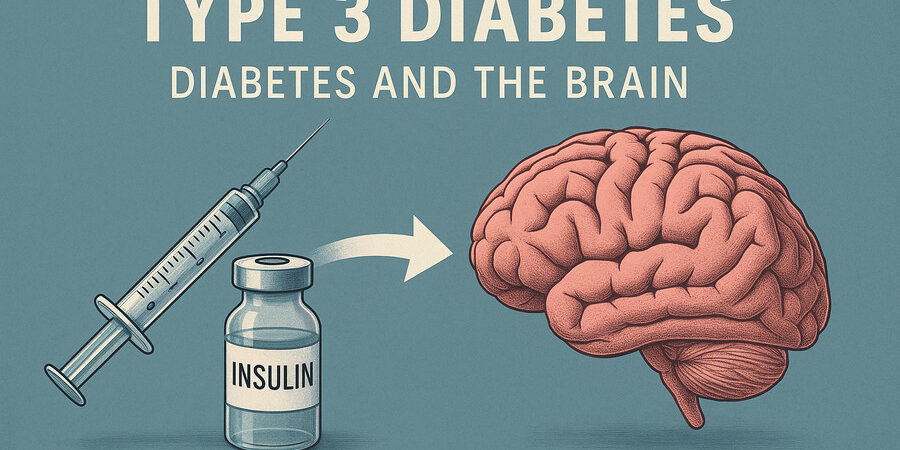


Is Alzheimer’s a form of diabetes? The phrase “Type 3 diabetes” is more visible on the Internet this year.
According to some researchers, Alzheimer’s behaves a lot like a form of diabetes that affects the brain.
Not in every case. But enough of them to make you stop and ask whether we’ve been missing the full story.
It sounds made-up at first, like a clickbait nickname. But there’s weight behind it.
Doctors like Suzanne M. de la Monte at Brown have studied the brains of people who died with Alzheimer’s and found signs of insulin resistance in the brain.
The same metabolic breakdown that starves muscles in Type 2 diabetes might be starving brain cells, too.
There’s a kind of horror in realizing that a hormone you associate with cookies and carb-counting might also be what helps your brain remember your daughter’s name.
Insulin isn’t just about blood sugar. In the brain, it helps neurons talk to each other.
When that system fails, as it does in people with Type 2 diabetes, memory can start to unravel.
That’s not because of plaques or tangles alone, but because the cells can’t get the fuel they need to keep up.
People with diabetes are up to 60% to 80% more likely to develop Alzheimer’s.
The reasons, like everything in medicine, are layered: inflammation, blood vessel damage, and insulin resistance and in the brain.
It’s not that one causes the other. More like one invites the other to the party and doesn’t ask it to leave.
Monica’s mother’s forgetfulness wasn’t linear. Some days, she seemed almost herself—cooking, laughing, and asking about the grandkids.
Other days, she cried because she couldn’t remember how to take her insulin. Monica started noticing that her blood sugar swings lined up with her moods.
High glucose made her irritable and distant. Lows made her shaky and confused. It was a terrible loop.
The worse her memory got, the harder it became to manage her diabetes. And the worse her diabetes got, the more her mind slipped away.
Monica’s family tried everything: pill organizers, timers, and simplifying meals. She handled the cooking and the banking.
Her brother took over doctor’s visits. They were told this was just the natural course of aging with Alzheimer’s.
But her family always wondered—if they’d known earlier about this link, if her mom’s diabetes had been more tightly controlled, would her mind have stayed sharper longer?
There’s still no consensus. The American Diabetes Association doesn’t officially recognize “Type 3 diabetes” as a diagnosis.
Many neurologists avoid the term altogether. It’s messy. Too speculative.
And yet, clinical trials are underway testing insulin delivered through the nose as a treatment for Alzheimer’s.
Early signs are promising, though it’s too soon to say.
There’s always room for debate on is Alzheimer’s is called Type-3 diabetes?
In the meantime, caregivers like Monica are left doing what families always do: holding the threads of someone else’s life, trying not to let any slip through.
Her mother passed away two years ago. By then, her world had shrunk to a recliner and a few photo albums.
But she still she recognized Monica and other family members, sometimes. She still smiled when Monica brought her sugar-free peach tea.
Families should think about the idea of “Type 3 diabetes” not as a definitive label but as a lens.
It helps make sense of how tightly the body and brain are connected—how one system breaking down can quietly pull another with it.
And for caregivers like Monica, it’s a call to pay closer attention, earlier.
To blood sugar. To mood swings. To the quiet ways memory starts to fray.
Maybe it won’t change the outcome. But it might give everyone more time.
Or at least, a better map of the road we’re already walking.